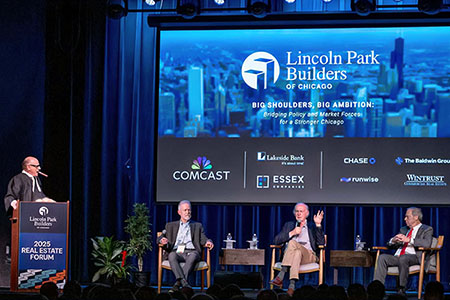
You might be wondering whether you really need a faster phone. For a lot of people, the answer is no. The real payoff will be for businesses. You’re just being asked to chip in.
Aug. 25, 2020 – Got your 5G phone? Didn’t think so. It’s easy to talk about the eventual arrival of future technologies, but really hard to say when we will see them. Every phone maker and telecom carrier is constantly claiming that the new world is right around the corner and just you wait – life will be great. The hype isn’t likely to slow down any time soon even though it’s frankly not that clear – even when 5G gets everywhere in a couple of years – that the typical mobile phone customer will notice a material difference in the day-to-day use of his or her device. Calls will be calls. Crowds – if we ever have crowds again – will present somewhat less of a congestion issue and hopefully your battery will last a whole day. Not too much incremental bang for your new bucks. And, unless the phone companies have a change of heart, these will be your bucks since a return to massively subsidized phones tied to multi-year contracts is unlikely. Big businesses will ultimately be the real beneficiaries of 5G although everyone involved would like the rest of us to help pay for it. These hyperbolic 5G claims remind me of the old computer gaming days when Intel, with great fanfare, would roll out a new and far more powerful Pentium chip every so often and tout the greatly improved benefits. But the faster processing speeds and upgrades in throughput were mostly invisible to the end user. Not to mention that there were generally no new games or other software available at launch to take advantage of these chips.
The PC makers who were the primary marketers of the computers using the new Pentium chips had a very tough time convincing the vast majority of satisfied gamers to upgrade to new boxes. We’re going to see the same kinds of consumer demand hurdles, along with other more unique obstacles, beginning next year when the manufacturers and telcos start to try even more aggressively to drive 5G adoption and large-scale transitions to new networks and phones. The reality is that 4G (and especially 4G LTE) may just be good enough for tens of millions of consumers in the absence of compelling arguments to the contrary. 5G means new phones, tablets, laptops, network software, and security protocols, which translates into trillions of dollars of new spend. There are cautions, warnings, and lessons here for the big guys that are also just as critical and relevant for every entrepreneur and startup as well. New products and services always face the same challenges. They need to actively demonstrate one or more of the following user benefits: save me time, save me money, make me more productive, or help me make better decisions. In these crazy days of social media and me-too-ism, you could add “improve my status” as a fifth consideration, but that’s pretty hard to quantify. And honestly, for many of the people who are struggling in the current environment, status is one of the last things on their newly constrained shopping lists. You can forget about arguing that these new and expensive 5G devices are going to save them any time or money. That’s clearly a crock. The arguments around increased productivity or improved decision making – which some will try to use to get their employers to buy the phones for them – are a little more complex, but they end up in the same place. No sale. We’re completely fixated on speed. That’s essentially the entire premise of the 5G pitch – bigger pipes and faster speeds. But for the vast majority of consumers, as opposed to enterprise customers, improving the speed of data transmission has next to nothing to realistically do with improvements in productivity or decision making. Faster alone isn’t better and greater processing speed doesn’t mechanically add intelligence to the process. 5G for most of us will be nice to have, but hardly need to have – at least until we start talking about truly autonomous vehicles communicating with each other. But even apart from the underwhelming necessity of stepping up to 5G, there are other much greater obstacles that need to be addressed. Here are the big three... We need a worldwide standard 4G standards were basically developed and promulgated by the American and European tech communities, which then promptly fell asleep. The Chinese stepped into the void and have dominated the 5G development process and dictated the majority of the 5G specs. Huawei and ZTE completely dominate the 5G network hardware space, which is why the United States and United Kingdom have belatedly started barring all of their equipment from our networks for national security reasons, among others. But you really can’t have a new global 5G standard and a worldwide solution if you have two huge countries lining up their allies and competing with each other to offer different networks that won’t likely be interoperable or connected. It’s clear that this issue alone will take years to resolve regardless of who is in the White House. We need to address health and safety concerns The RF radiation boogie man is always lurking. We can expect community questions and considerable resistance from the tin foil folks – they’ve already attacked 5G towers and techs as COVID-19 sources – to the kind of extensive new equipment deployment that 5G will require.
The antennas will need to be very close to the end users and, especially in the cities, they will need to be very densely concentrated. None of this will make the neighbors happy or comfortable. We need to know who will be paying for these things New phones, tablets, laptops, network software and zillions of new antenna sites won’t pay for themselves – and the telcos are looking at trillions of dollars of investments, which couldn’t come at a worse time for them. Basically, everyone in the U.S. who wants a phone has one. And we’re seeing new competitors entering the market to put additional pressure on service revenues such that the next couple of years look like flat to down revenues for the big carriers. It’s not a great situation for them, even if 5G represented essentially “business as usual,” but the reality is that 5G also means new network management tools, tighter chain (vertical) integration, and a whole new business model that will be software management intensive along with capital intensive at least for the next five years until everything new gets funded and built out. So, as to when we’ll see widespread 5G, your guess is probably as good as mine, but 2023 makes the most sense to me. |















